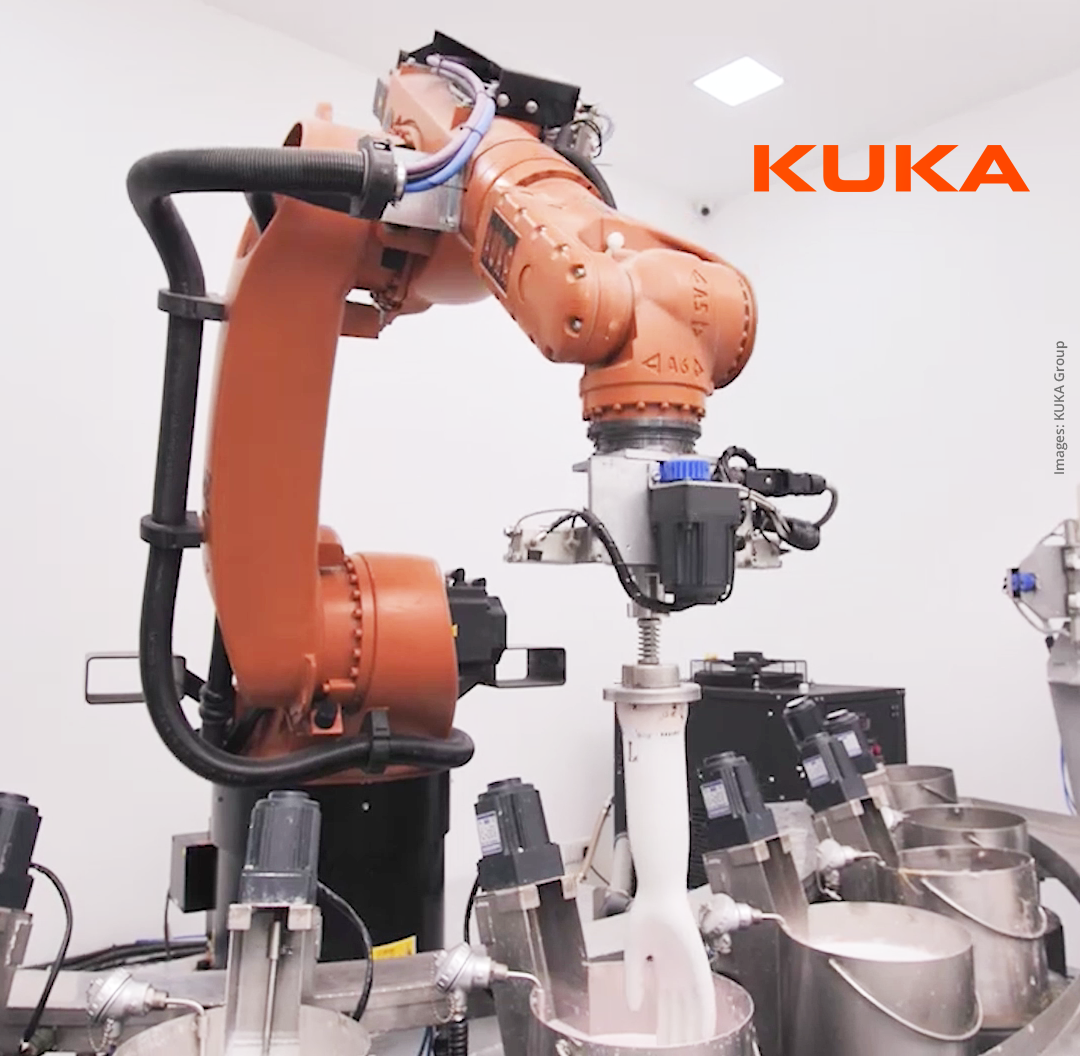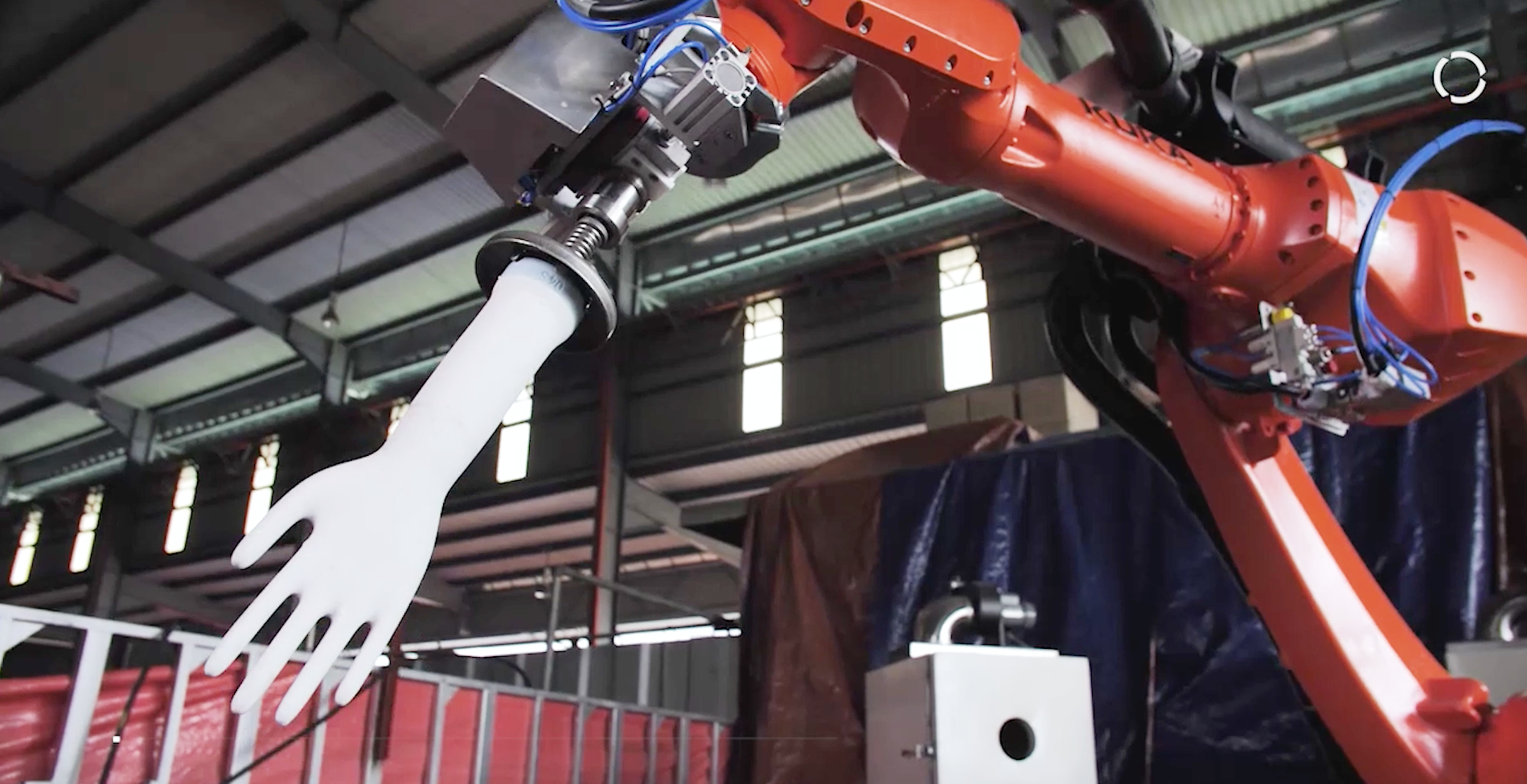Efficient solutions in demand
in the glove industry
Every year, around 300 billion medical rubber gloves are used around the world – and every second one of
them comes from Malaysia. Due to the Corona pandemic alone, production has once again risen sharply.
Since
2013, the Malaysian company Le Inoova in Selangor has been supporting producers of gloves. "We provide
consultancy and solutions for the glove industry. In doing so, we find that many in the industry face the
same problems," says Khoo Siong Hui, Managing Director of Le Inoova. He is referring primarily to the
development process and the testing phase prior to actual glove production. This is exactly where Le Inoova
comes in and has developed a new, more cost-effective method. It can, for example, reduce material waste
from around 2,500 kilograms of latex to 30 kilograms per day.
Hand in hand with
KUKA system partner IDEA
The goal was to make glove manufacturing more flexible as well as to offer a robotic solution that is easily
accessible at an affordable cost. Together with KUKA system partner IDEA, also from Malaysia, the company
developed a robotic solution for the glove dipping process under development. The process basically looks
like this: A ceramic hand mold is manually dipped by a chemist into a liquid latex, vinyl, or PVC compound.
The material adheres evenly to the ceramic dip mold and is baked in an oven. "Usually, we spend a lot of
time on the manual dipping process because we can't control the dwell time and temperature accurately. This
delays the final product," Hui explains. This is where KUKA's robots come in. The goal, he says, was to
produce high-quality gloves while reducing dipping time, potential defects, and uneven distribution of
latex. "We believe automation is key in any industry," says CY Ching, IDEA's Managing Director. "And so it
is for the glove industry as well."
Colleague
robot has the right touch
So instead of manually dipping the ceramic mold into the various masses, a KUKA robot takes over the work.
The mixing containers with the liquids are located in a semicircle in front of it. On the robot itself, the
ceramic mold can be quickly and easily attached by an employee or chemist. The robot dips the mold into the
individual containers fully automatically. After baking in the oven, chemists can perform a quality check
and immediately change various parameters such as the immersion time or the immersion angle for the next
test run.



